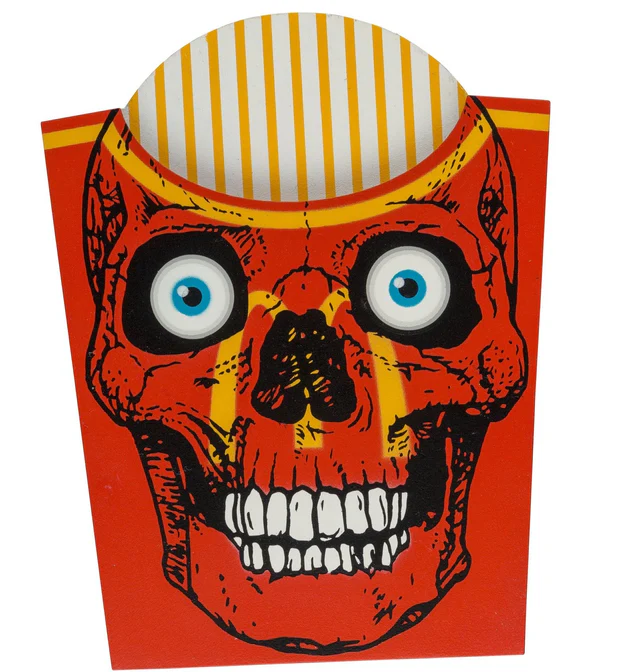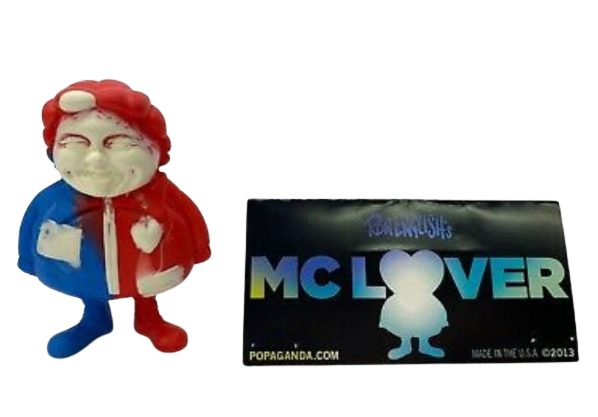
Food & Eating
-

Ron English- POPaganda MC Lover Patriot Art Toy by Ron English- POPaganda
MC Lover- Patriot Mini-Vinyl Limited Edition Vinyl Art Toy Collectible Artwork by pop graffiti artist Ron English- POPaganda. 2014 Signed Limited Edition of 30 Ron English- POPaganda Artwork Size 1.5x3 "Labor Day" version of Ron English- POPaganda's iconic MC Supersized character in his heart-wearing MC Lover form - just in time to celebrate the American labor movement's annual holiday! Standing roughly 3 inches tall, these hand-cast resin pieces have been made in the U.S.A. and produced in a patriotic Red, White, and Blue marbled color combination! MC Lover (Patriot Edition) is limited to an edition of 30 signed pieces, loose bag with a numbered header card. Ron English- POPaganda's MC Lover: A Patriotic Twist on Pop Graffiti Art The MC Lover - Patriot Mini-Vinyl is an emblematic piece by Ron English- POPaganda, an acclaimed figure in the pop graffiti art movement. Released in 2014 as a limited edition of 30 signed pieces, this artwork reflects English's reputation for infusing iconic symbols with subversive charm and political commentary. The "Labor Day" version transforms his iconic MC Supersized character into MC Lover, adorning the figure with a heart while draping it in the patriotic colors of red, white, and blue—a salute to the American labor movement. Hand-Crafted Resin as a Medium for Street Pop Art Each 3-inch tall figure is hand-cast in resin, a material choice that speaks to the DIY ethos of street art, yet allows for the intricate detail and durability desired in collectible art toys. The marbled color combination not only appeals to the aesthetic sensibilities of collectors but also evokes the spirit of American patriotism. Produced entirely in the U.S.A., these pieces celebrate national pride through the prism of pop art, offering a tangible connection to cultural identity and street art’s broader narratives. Collectible Artwork Signifying Cultural Commentary Ron English- POPaganda's MC Lover (Patriot Edition) is presented in a loose bag with a numbered header card, emphasizing the collectible nature of the piece and the artist's attention to the art toy community's collecting culture. The limited availability of the Patriot Edition mirrors the exclusivity often found in street art, where each piece is a unique interaction with space and audience. Here, English transitions that interaction to a personal scale, inviting collectors to engage with a piece of street pop art that stands as both a cultural statement and a piece of Americana. In the world of Street Pop Art & Graffiti Artwork, Ron English- POPaganda’s MC Lover - Patriot Mini-Vinyl is a profound statement on the synthesis of commercial iconography and street-level grit. It’s a testament to how the medium of vinyl art toys can become a canvas for social and political discourse, echoing the power of street art to captivate and provoke thought in any context.
$121.00


